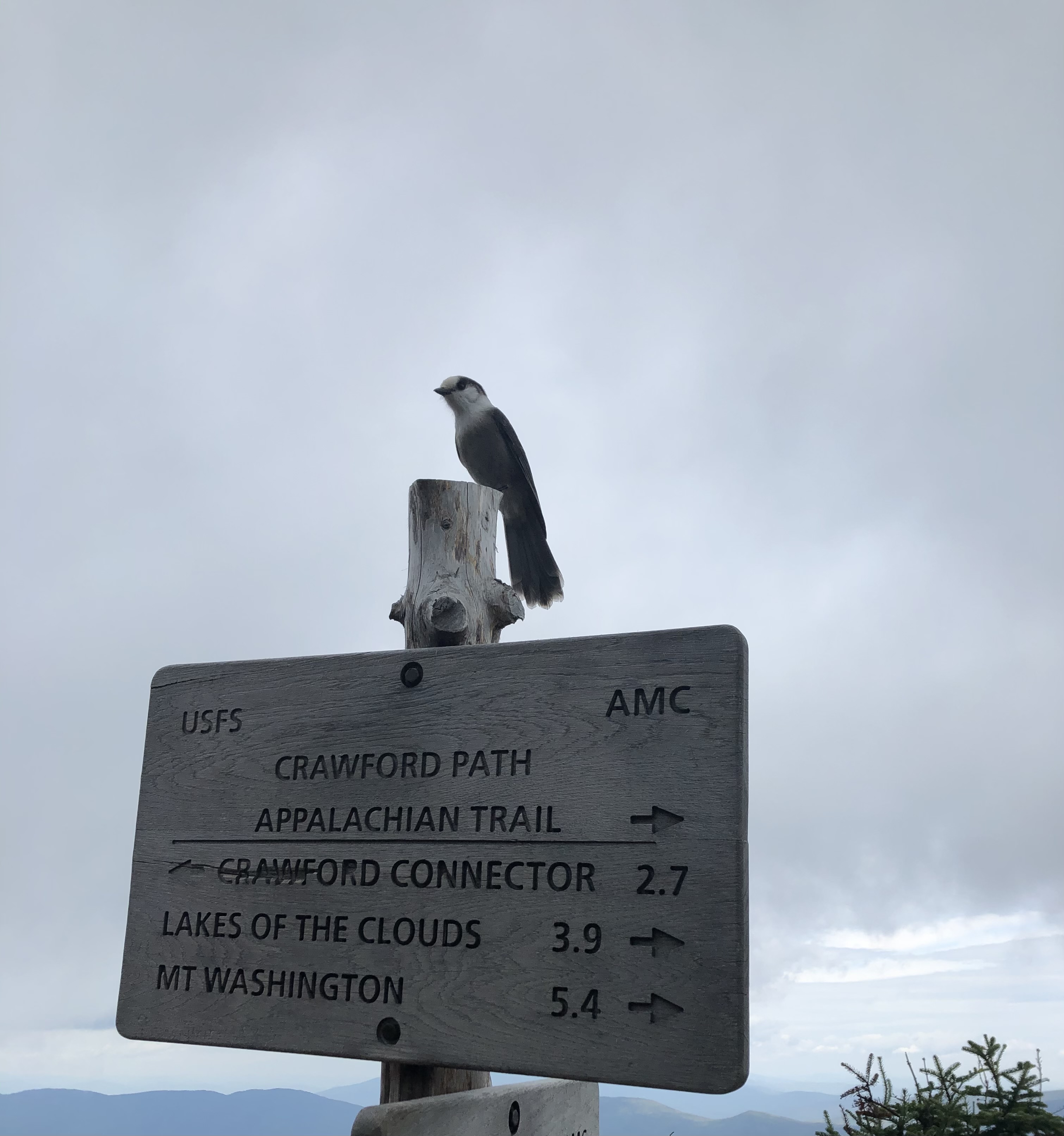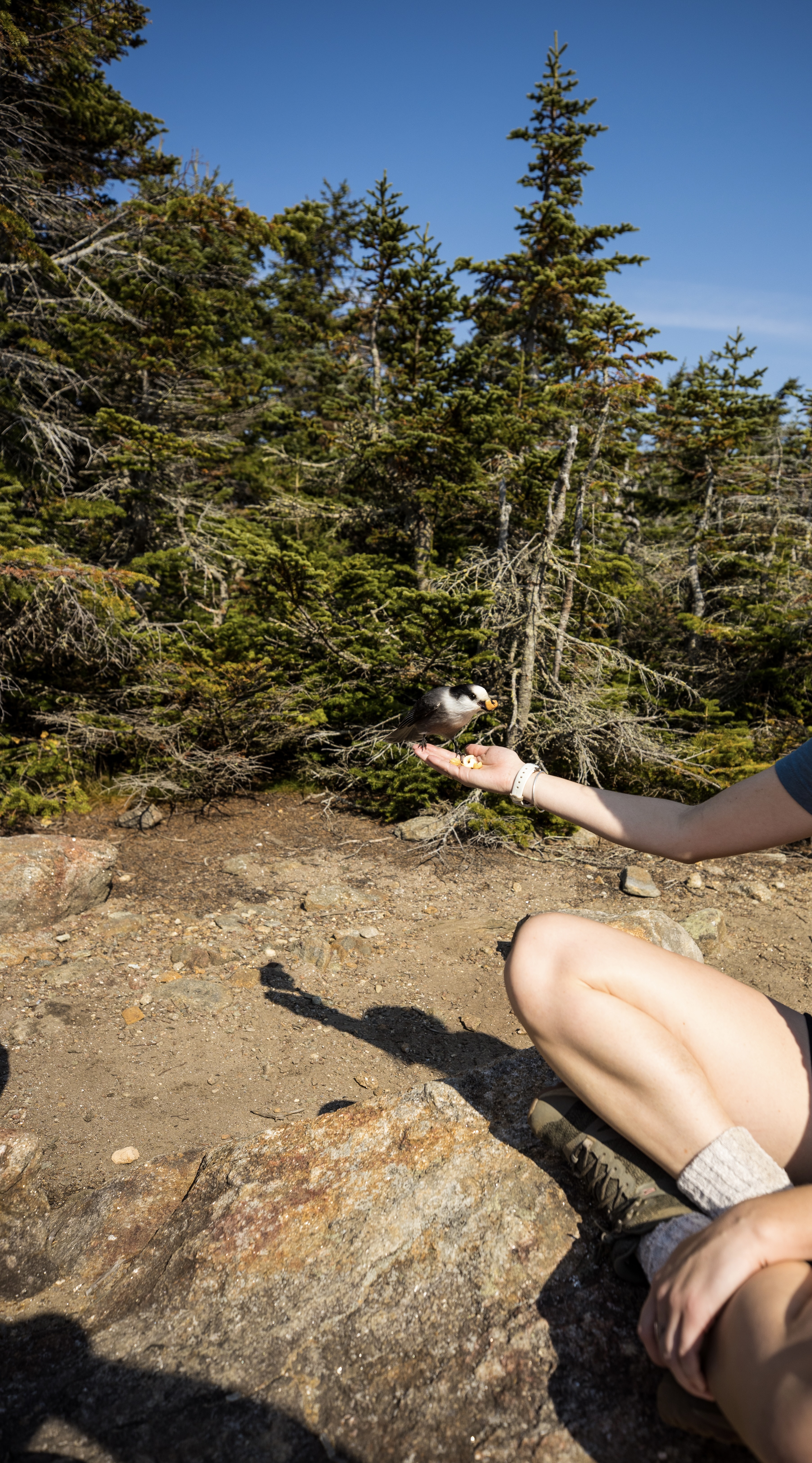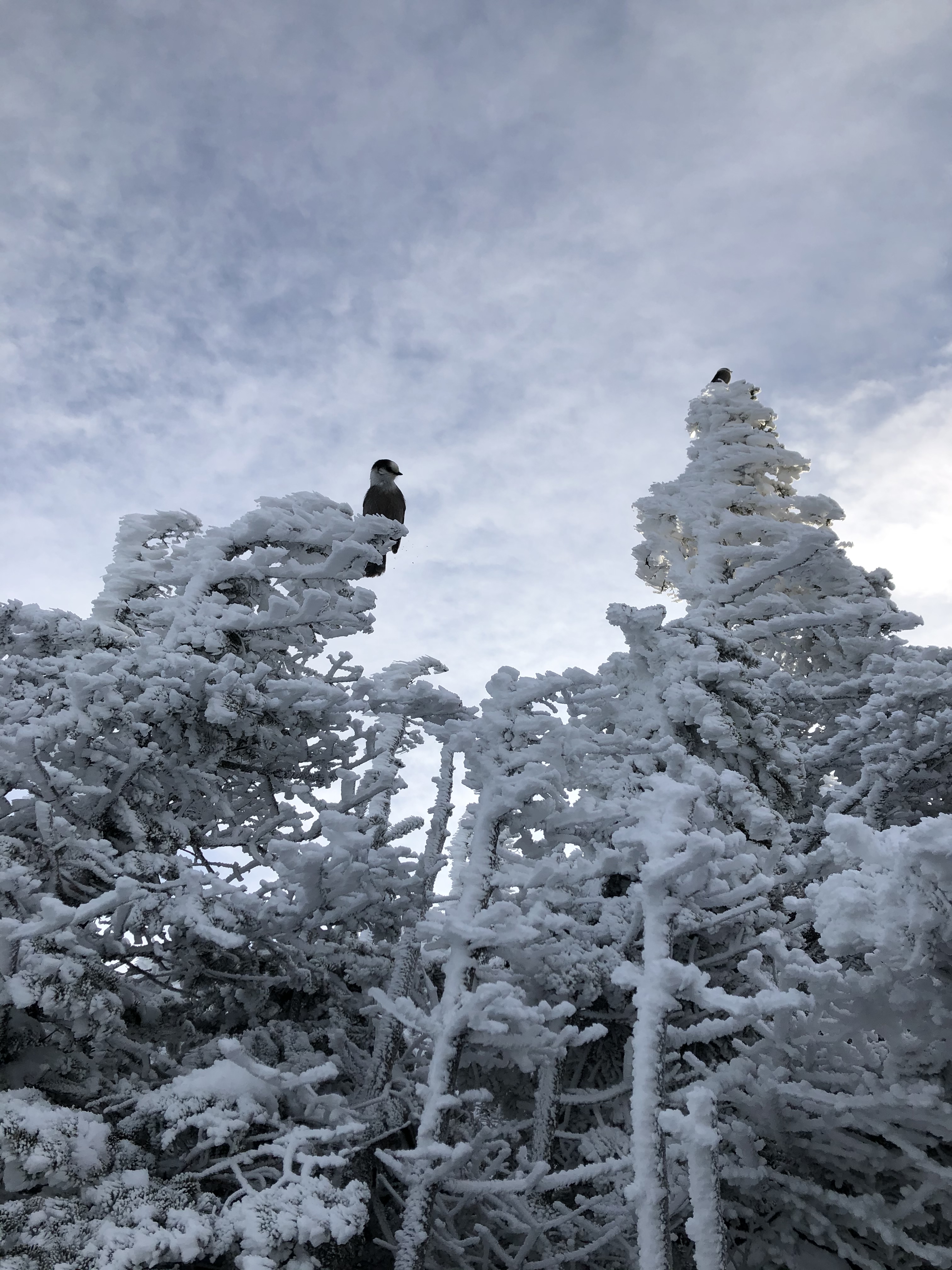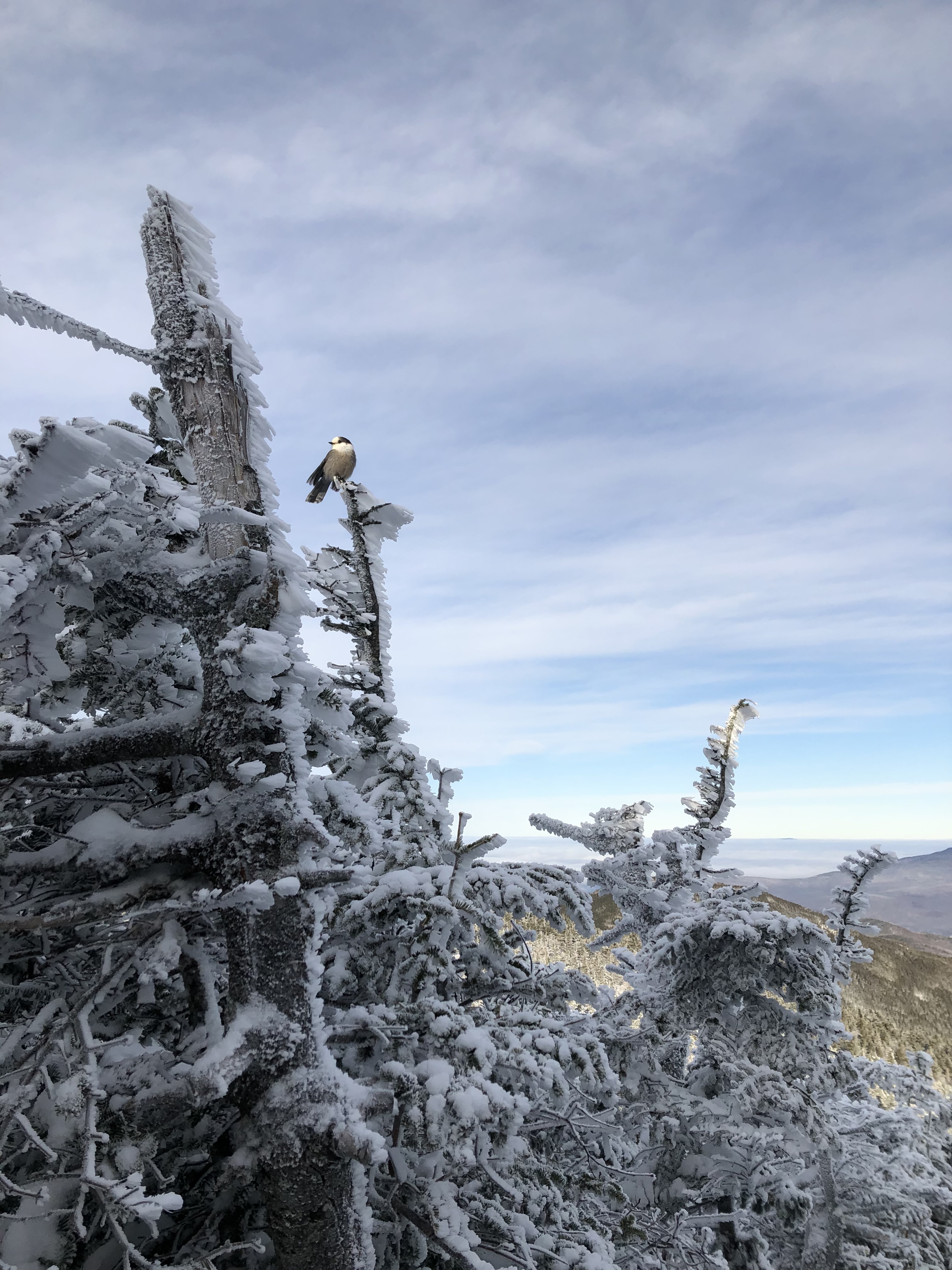The first time I saw a Grey Jay, it flew within two feet of me and looked down at my husband and I from atop a trail sign. At the time, I didn’t know about their learned trust in humans and so I was floored to even get that close to one. Roughly the size of a blue jay, they can be found at high elevation in the U.S. and Canada. Also known as a Canada Jays or Whiskey Jacks, their silvery coloring makes them unmistakable as does their friendly nature.

My husband posted the above scene on his Snapchat and an acquaintance responded with “Those are grey jays! They’ll eat right out of your hand!” We researched what they eat; turns out it’s a little bit of everything. As omnivores they’ll eat small amphibians, insects, fungus, berries, and nuts. They cache a lot of the food they find for harsh winters meaning that they won’t necessarily eat food on sight and instead will store it among a multitude of hiding places like squirrels.
With our hiking bags stocked with pine nuts, the only nut we thought might be relatively equivalent to their natural diet, we kept our eyes peeled for them during our next several hikes. We found them first on the Carters.

Without hesitation, they flew into my open hand. They are so gentle with their little talons, gripping onto your finger. They land, look you in the eye, grab the snack, maybe chow down for a second, and then fly off swiftly to their nest or their chosen hiding area. Give them some time and they’ll fly back for more.

I’ve been visited by Grey Jays in all season in The Whites. I know that the rule of thumb is “don’t feed wildlife” so I feel slightly guilty for indulging in this experience when it happens. What makes me cringe though is when I see hikers ripping off a piece of their highly processed protein bar or sandwich just to have something to give to them. At least I can say I’ve forfeited Whiskey Jack encounters when I didn’t have raw nuts handy.

Mountains Where I’ve Seen Grey Jays
- Pierce
- Jackson
- Carter Dome
- Field
- Carrigain